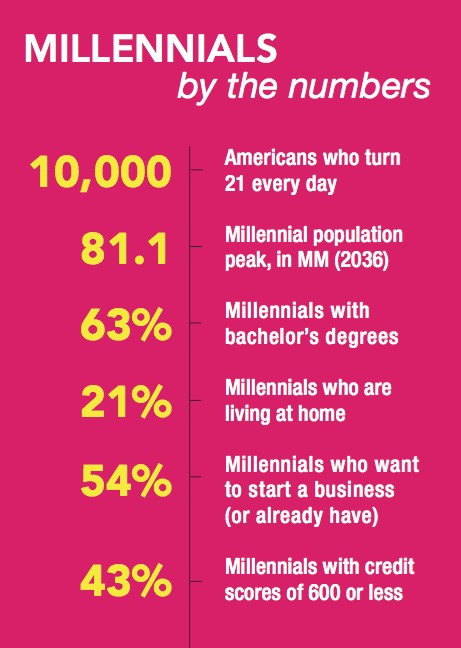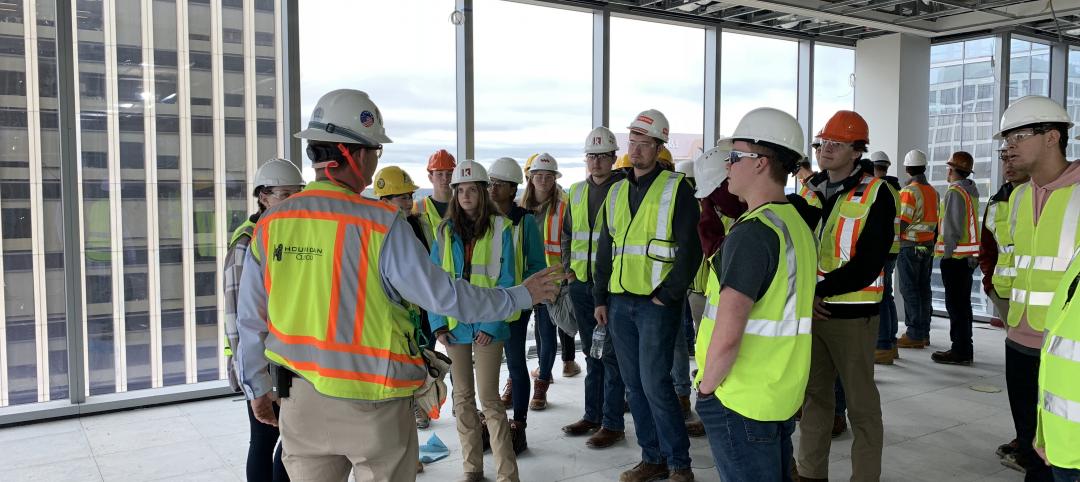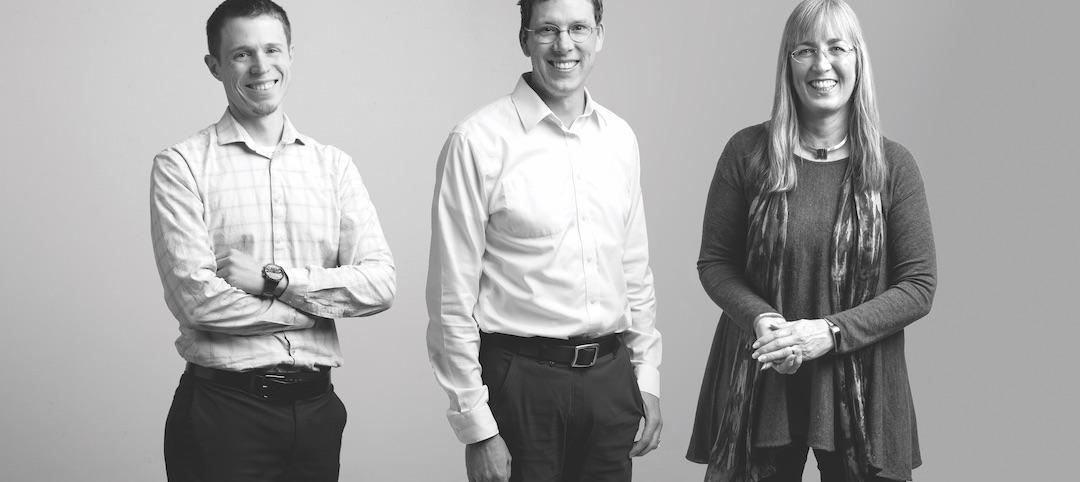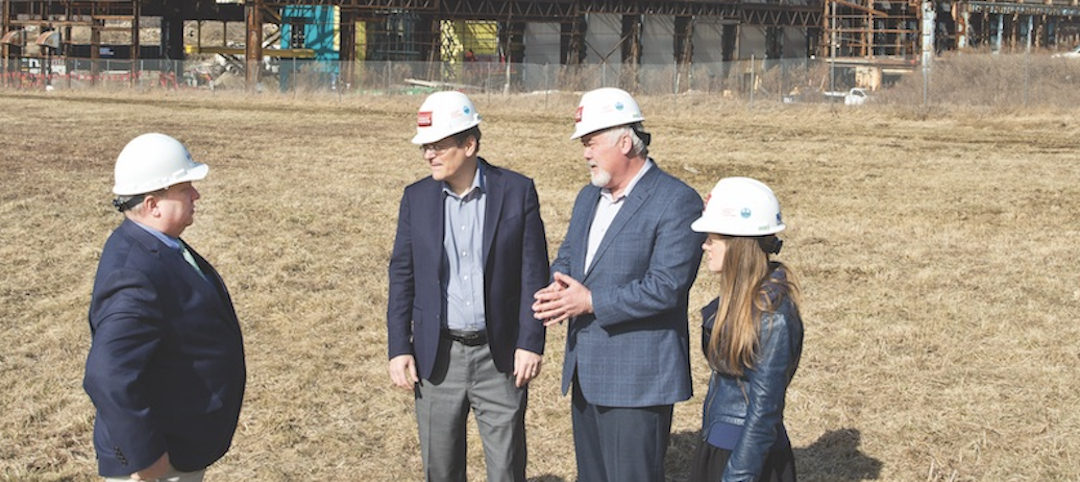What makes Millennials tick? Lots of businesses, AEC firms included, would like to know the answer to that question. That’s because, at 75.4 million strong, the 18–34 generation has just left Baby Boomers in the dust as the largest population group in America, according to the U.S. Census Bureau.
Millennials represent the largest share of the American workforce—more than a third of all workers—and could rise to half the workfore by 2020, according to the Pew Research Center.
BD+C MOVERS AND SHAPERS
The People, Institutions, and Movements that are influencing design and construction in the U.S. and around the world.
Dan Gilbert – Detroit's Catalytic Converter
Judith Rodin – Crusader for Resiliency
Bruce Katz – Urban Evangelist
Millennials – The Disruptors
Alloy LLC – Vertical Integrator
Jerry Yudelson – Green Giant
The PANAMAX Effect – The New Panama Canal
Theaster Gates – Real Estate Artist
Unlocking the door to Millennials’ hearts and minds would give AEC firms a competitive edge in the design and construction of residences, offices, college campuses, retail stores, hotels, and who knows how many other building types.
The problem is that so much of what is supposedly known about Millennials seems, upon closer inspection, to be facile, anecdotal, stereotypical, or contradictory. For example, Millennials are said to be postponing home buying because they’re being squeezed by the $1.2 trillion in student debt they’re carrying. But the National Association of Realtors (NAR) has found that the median per-student debt for GenXers ($28,000) and younger Boomers ($29,100) is actually higher than for Millennials ($25,000).
There’s been a lot of talk, too, about how Millennials prefer renting (especially in urban centers) to owning. That may be true in some cases. Since 2000, according to Curbed, Cleveland’s Millennial population has increased 77%, an influx that has sparked a downtown renaissance: over the next two years, 29 projects will convert commercial space to residential.
But research by the NAR finds that, nationally, Millennials represent the largest cohort (35%) of homebuyers, and, says the NAR, they’re mostly buying in—heaven forbid!—the suburbs.
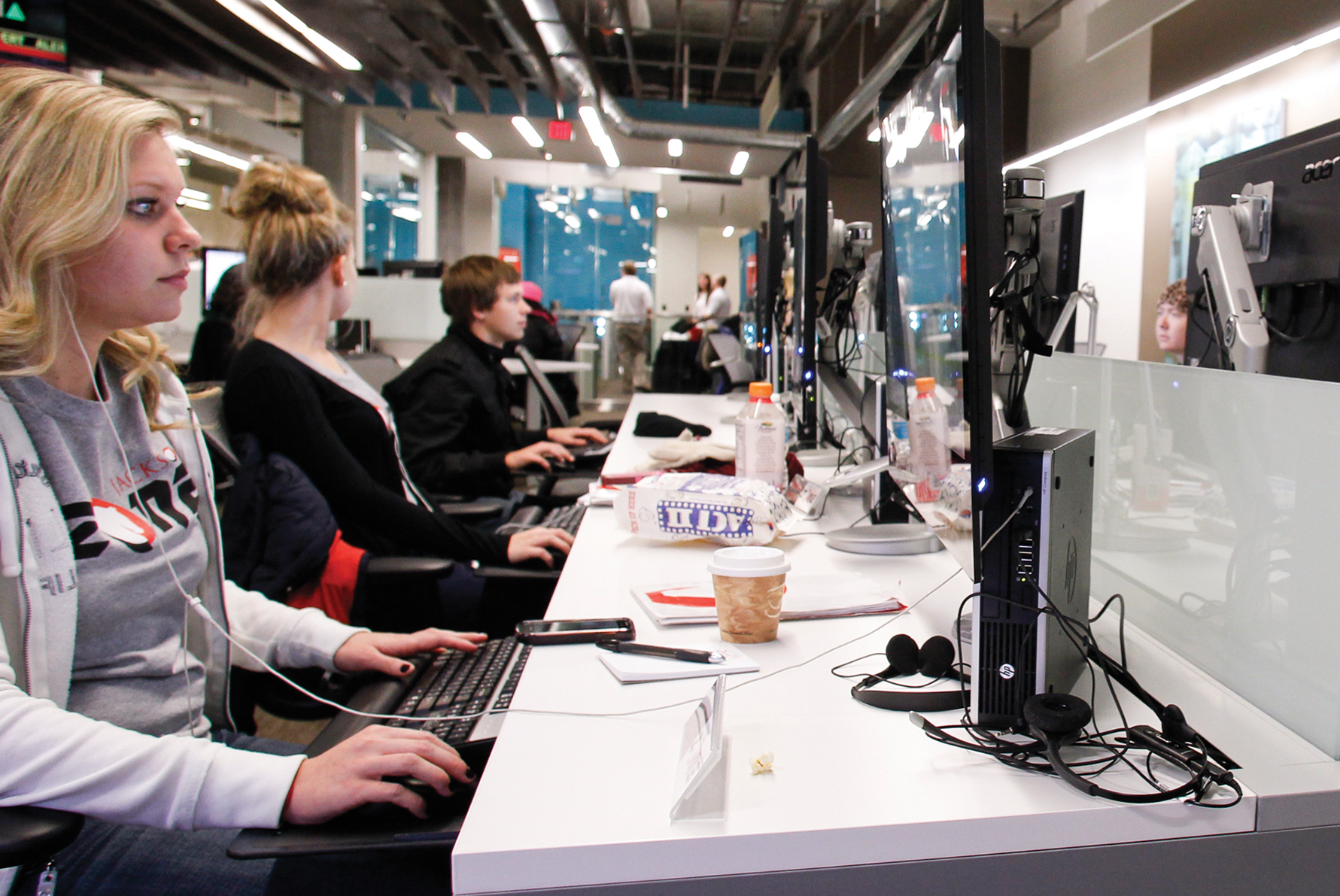 The Zone, designed by Gresham, Smith & Partners, is a corporate center at the edge of the Michigan State University campus, in East Lansing. The client, an insurance company, wanted an environment that would help them recruit and retain Millennials. Photo: Matthew Dae Smith/Courtesy GS&P. Click to enlarge.
The Zone, designed by Gresham, Smith & Partners, is a corporate center at the edge of the Michigan State University campus, in East Lansing. The client, an insurance company, wanted an environment that would help them recruit and retain Millennials. Photo: Matthew Dae Smith/Courtesy GS&P. Click to enlarge.
LUXURY/HIP HOSTELRIES
Hotels are another sector where Millennials are impacting design. They’re almost twice as likely to travel for business (46%) as Boomers (26%), according to the Global Business Travel Association, so there’s been an explosion of new brands to meet that demand: Vib and Glo (Best Western), Moxy and AC Hotels (Marriott), Canopy and Tru (Hilton), and Hyatt Centric.
They’re offering services that Millennials supposedly demand. Check-in from their smartphones. Emoji room-service menus. Free WiFi. Common areas with games and beer/wine service. Bed headboards that convert into desks. Room lounge chairs with sliding tablet holders. No office-style desks. No tubs, either, but the showers have to be very high end.
At New York’s Yotel (12th Avenue and 42nd Street), just push a button and half the bed rolls up to form a comfy sofa. Want to store luggage? A robotic arm will do that for you.
These new brands are cheaper to build than, say, a typical Hampton Inn ($100,000/room): $84,000 a room for Tru, down to $65,000 a room for Glo.
Of course, Millennials’ favorite lodging brand may not be a hotel. Airbnb, anyone?
 The Zone. Photo: Matthew Dae Smith/Courtesy GS&P. Click to enlarge.
The Zone. Photo: Matthew Dae Smith/Courtesy GS&P. Click to enlarge.
THE NEW DEFINITION OF ‘OFFICE’
Certain differentiating characteristics about Millennials are hard to ignore. As the first generation of digital natives, Millennials prefer technology and social media as their primary mode of interaction with friends, coworkers, and the outside world.
Technology also plays into this cohort’s “Generation Now” reputation for demanding instantaneous—or at least quicker—gratification. A recent Deloitte survey found that only 28% of Millennials say their companies fully utilize their talents. The urge to work for themselves is palpable among Millennials, whose impatience about career advancement without the requisite learning curve or grunt work drives employers and older coworkers nuts.
To keep younger workers from walking because they feel unchallenged or underappreciated, more companies are rethinking their employee space management.
The Googlization of the workplace—decentralizing hierarchies; shucking conventional offices for open, collaborative, wired spaces; and acknowledging that the lines separating life and work are dissolving—is real and, in some cases, dramatic.
About 80% of PricewaterhouseCoopers’ employees are Millennials, many of whom told their bosses they wanted more flexibility to work from home. Three years ago, PwC started converting its U.S. offices to coworking spaces. Employees can use proprietary software or a mobile app to reserve a seat or office to work in.
Today, nearly 90% of PwC employees now “hotel,” Bloomberg reports.This shift has allowed the company to shrink its Boston office alone by 18,000 sf. PwC expects to eventually save hundreds of millions of dollars by reducing leased space.
Whether shrinking office space is a good thing for design and construction firms is another matter. Given the clout that Millennials are exerting on workplace patterns, it’s a trend that’s not going to go away soon.
Related Stories
Women in Design+Construction | Jan 25, 2024
40 Under 40 Class of 2023 winner Kimberly Dowdell inaugurated as AIA 2024 President
The American Institute of Architects (AIA) has announced the inauguration of Kimberly Dowdell, AIA, NOMAC, NCARB, LEED AP BD+C, Principal and Director of Strategic Relationships at HOK and BD+C 40 Under 40 superstar, as its 100th president.
AEC Innovators | Mar 3, 2023
Meet BD+C's 2023 AEC Innovators
More than ever, AEC firms and their suppliers are wedding innovation with corporate responsibility. How they are addressing climate change usually gets the headlines. But as the following articles in our AEC Innovators package chronicle, companies are attempting to make an impact as well on the integrity of their supply chains, the reduction of construction waste, and answering calls for more affordable housing and homeless shelters. As often as not, these companies are partnering with municipalities and nonprofit interest groups to help guide their production.
AEC Innovators | Feb 28, 2023
Meet the 'urban miner' who is rethinking how we deconstruct and reuse buildings
New Horizon Urban Mining, a demolition firm in the Netherlands, has hitched its business model to construction materials recycling. It's plan: deconstruct buildings and infrastructure and sell the building products for reuse in new construction. New Horizon and its Founder Michel Baars have been named 2023 AEC Innovators by Building Design+Construction editors.
40 Under 40 | Oct 19, 2022
Meet the 40 Under 40 class of 2022
Each year, the editors of Building Design+Construction honor 40 architects engineers, contractors, and real estate developers as BD+C 40 Under 40 awards winners. These AEC professionals are recognized for their career achievements, passion for the AEC profession, involvement with AEC industry organizations, and service to their communities.
Movers+Shapers | Nov 7, 2021
Passage of $1.2 trillion infrastructure bill expected to spur stronger construction activity
AEC firms see federal investment as historic
Movers+Shapers | Apr 30, 2020
College programs help prepare students for careers in the construction industry
Universities with AEC programs hone their curricula and research to prepare students to hit the ground running in the construction industry.
Movers+Shapers | Apr 21, 2020
Management Training: AEC firms bring students into the real world
Students benefit substantively from internships offered by AEC firms.
Movers+Shapers | Apr 17, 2020
Meet the ‘AEC outsiders’ who are helping to push the industry into the new decade
AEC professionals have enough on their plates without becoming specialists in a new skill outside of their wheelhouse.
Movers+Shapers | Apr 15, 2020
Buildings as "open source platforms"
NBBJ’s year-old Design Performance Group helps building teams make smarter choices earlier.
Movers+Shapers | Apr 23, 2019
Steely resolve: Carnegie Mellon University fuels Pittsburgh's post-industrial reinvention
After the steel industry started collapsing in the late 1970s, Pittsburgh has been reinventing itself as a science, medical, and academic hub.



